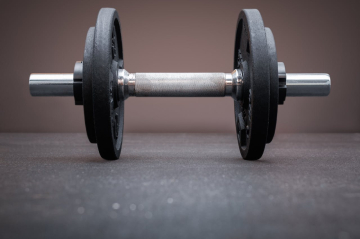Abdominal fat is a common concern for many people, not only for aesthetic reasons but also for its health implications. Excess fat in this area is associated with an increased risk of chronic diseases such as type 2 diabetes, heart disease, and certain types of cancer. Below are effective, scientifically backed strategies for reducing belly fat.
Understanding Abdominal Fat.
There are two main types of fat in the abdomen: subcutaneous fat, which is located just under the skin, and visceral fat, which surrounds the internal organs. Visceral fat is the most dangerous for health, as it is linked to insulin resistance, inflammation and an increased risk of metabolic diseases.
Strategies to Reduce Abdominal Fat.
Healthy nutrition.
- Eat Less Sugar and Refined Carbohydrates:
Excessive consumption of sugar and refined carbohydrates is related to increased abdominal fat. These foods quickly raise blood glucose levels, which can lead to greater accumulation of visceral fat. To reduce abdominal fat, it is advisable to limit the consumption of sugary drinks, sweets and refined baked goods.
- Increase Protein Intake:
Protein helps reduce appetite and increase satiety, which can lead to lower total caloric intake. Additionally, protein increases metabolic rate and helps maintain muscle mass during weight loss. Include lean protein sources such as chicken, fish, eggs, legumes, and low-fat dairy products in your diet.
- Consume Healthy Fats:
Not all fats are harmful. Healthy fats, such as those found in avocado, nuts, seeds, and olive oil, can help reduce belly fat. These fats promote satiety and can improve the lipid profile, reducing the risk of heart disease.
- Eat Soluble Fiber:
Soluble fiber absorbs water and forms a gel that slows the passage of food through the digestive system. This can help you feel fuller longer and reduce your appetite. Good sources of soluble fiber include oats, barley, legumes, apples and citrus fruits.
Regular Exercise.
- Aerobic Exercise:
Aerobic exercise, such as running, swimming, or cycling, is effective at burning calories and reducing belly fat. It is recommended to get at least 150 minutes of moderate aerobic exercise or 75 minutes of vigorous aerobic exercise per week.
- Strength Training:
Strength training helps build and maintain muscle mass, which increases metabolism and promotes fat burning. Incorporating resistance exercises, such as weight lifting or resistance band training, two to three times a week can be beneficial.
- High Intensity Interval Training (HIIT):
HIIT alternates short bursts of intense exercise with recovery periods. This type of training is highly effective in reducing abdominal fat compared to moderate aerobic exercise. An example of HIIT could be alternating 30 seconds of sprinting with 1-2 minutes of brisk walking.
Lifestyle Strategies.
- Get enough sleep:
Lack of sleep is associated with an increased risk of weight gain, including belly fat. It is important to sleep between 7 and 9 hours per night to maintain proper hormonal balance and prevent weight gain.
- Manage stress:
Chronic stress can lead to increased abdominal fat due to the production of cortisol, a hormone that promotes visceral fat storage. Practicing stress management techniques such as meditation, yoga, or deep breathing can help reduce cortisol levels.
- Avoid Excess Alcohol:
Excessive alcohol consumption is related to increased abdominal fat. Reducing alcohol consumption can help reduce waist circumference and improve overall health.
Supplements and Additional Aids.
- Green Tea:
Green tea contains antioxidants called catechins, which can help increase metabolism and promote fat loss. Drinking green tea regularly can be a useful strategy to reduce belly fat.
- Omega-3 fatty acids:
Omega-3 supplements, such as fish oil, can help reduce visceral fat. Omega-3s have anti-inflammatory properties and can improve insulin sensitivity, which contributes to better distribution of body fat.
- Probiotics:
Probiotics can have a positive impact on gut health and can help reduce belly fat. Probiotics are found in fermented foods such as yogurt, kefir, and sauerkraut, as well as in supplements.
Example of a Daily Plan to Reduce Abdominal Fat.
Tomorrow.
- Breakfast: Oatmeal with fresh fruits and a handful of nuts.
- Exercise: 30 minutes of running or brisk walking.
Noon.
- Lunch: Chicken salad with avocado, spinach, tomatoes and olive oil dressing.
- Snack: Greek yogurt with berries.
Late.
- Exercise: 20 minutes of strength training (weights or elastic bands).
- Snack: Apple with almond butter.
Evening.
- Dinner: Baked salmon with quinoa and asparagus.
- Snack: Green tea.
Evening.
- Activity: 10-minute meditation session before bed.
Reducing belly fat requires a comprehensive approach that combines a balanced diet, regular exercise and lifestyle changes. It is important to be patient and consistent, as losing belly fat can take time.
Implementing these changes can not only help reduce belly fat but also improve overall health and well-being. It is always advisable to consult with a health professional or nutritionist before starting any weight loss program or significant changes in diet and exercise.






